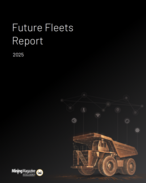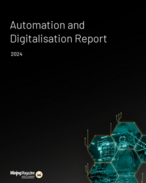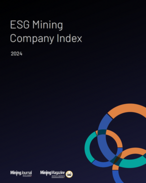Argonaut managing director Edward Rigg explained the negative attitudes to the former market favourites.
He attributed it to an over-reaction to the planned slowdown in Chinese growth and an emphasis on short-term economic indicators.
Argonaut is an investment bank with offices in Perth and Hong Kong, so Rigg knows a fair bit about investor appetite.
“Hong Kong is pretty negative on iron ore and also thermal coal,” Rigg said.
“Hong Kong’s also negative on the outlook for China at the moment.
“Some are saying the game’s all over, but that’s not the case.”
The problem is that investors are too focused on the short-term.
“Some look at the ten-day moving averages on steel consumption as an indicator of the strength of the Chinese economy, but that’s just ridiculous,” Rigg said.
“Iron ore imports are still at 65 million tonnes per month but generally there’s quite a lot of negativity.”
Coal use is also on the up.
“When metallurgical coal prices went up, they started using more and more of their own coal. Then they had to go and find super high grade blending coal.
“What we’re seeing now is more coal used for a tonne of steel than before.
“That inflection point is about $US200-210, so if the coal price is above $210 per tonne, then Chinese steelmakers use more of the domestic supply.”
Many companies, particularly Fortescue Metals Group, have suffered big share price drops from that grey area of stock trading called short-selling.
Shorting involves an investor borrowing a stock, selling it on the market, which drives the price down, returning the stock to the lender and then buying again on-market at the reduced price.
It is contentious and bans on short-selling were temporarily instituted by the ASX during the global financial crisis.
FMG has cried foul in the past and Rigg agreed that shorting by big Hong Kong investors could put a major dent in a company’s market value.
“We’ve seen iron ore companies come to Hong Kong to do presentations and all the fund managers are interested in doing is shorting,” he said.
“We had another company that was keen to be taken around and meet some fund managers in Hong Kong, but we told them ‘no’ because we thought they would actually achieve the opposite of what they thought would happen, in that the funds would short them.”
The biggest drawcards for Hong Kong investors have always been property and gambling.
Petroleum is vying for the coveted third position.
“Gas is absolutely the hottest play in Hong Kong right now,” Rigg said.
The reason for petroleum’s elevated status is because of a massive push by the Chinese government to reduce reliance on coal, and because investors have turned their backs on other bulk commodity plays.
In its 12th and current five-year plan, the Chinese government has stated its intention to boost gas use.
China is among the only countries that imports via seaborne LNG and by pipeline, mostly from Russia and Myanmar.
Wanting to reduce reliance on external sources, the government is offering major incentives for domestic exploration.
They recently opened up the second round of permitting to foreign companies for shale gas acreage.
So the shale boom in the US and Australia gets most of the attention, but the Chinese shale industry has bigger potential.
“Unlike in the US, where they produce too much gas and there’s an oversupply, in China’s there’s a massive pool of consumers,” Rigg said.
“After what we’ve seen at Fukushima and with the traditionally sensitive government in China, they don’t want to be using uranium or burning dirty coal.
“Clean energy from gas-fired power stations is the go.”
So a company with a gas find in China is going to make it big time.
“It’s also why companies in offshore Vietnam, for example, are doing so well in the market,” Rigg said.
“Big gas discoveries in Indonesia, Malaysia, or even Australia are going to be among the biggest games in town.”
Highlighting how serious the government is about increasing gas usage are moves in the Shanxi and Shaanxi provinces.
Two of the biggest coal regions in China, the provincial governments are already building pipelines and pressure stations in preparation for the boom.
Coal-bed methane will play its part.
When announcing its 12th five-year plan in late 2011, the National Development and Reform Commission planned to boost CBM production from the 2010 output of 1.5 billion cubic metres, to more than 30Bcu.m in 2015.
China sits atop the world’s third-largest CBM resource, estimated at 37 trillion cubic metres.
One company taking advantage is ASX-listed Sino Gas & Energy.
“It’s got a cracking onshore coal-bed-methane project and with any unconventional gas source, the company receives extra incentives from the government,” Rigg said.
Sino Gas’ CBM project is in the Shanxi province, with a joint venture landholding of 3000 square kilometres and estimated gas resources and reserves of 3.7 trillion cubic feet and 22 billion cubic feet.
The incentives it receives include tax waivers, subsidies and construction of essential infrastructure.
A version of this article will appear in the June/July edition of RESOURCESTOCKS magazine.
























